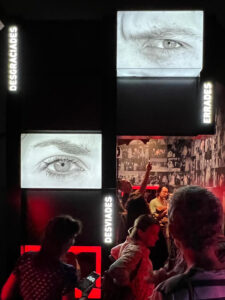GENS PUMPS. Burjassot, 54
Juan Uslé is a slow and reflective painter, What do you think about the painting?, lives in it and travels with it. His works are a self-reflective pictorial act. The landscape is his central theme and he approaches it from a purely experiential relationship that does not seek sensationalism., but introspection. need to touch, feel and live the things you are going to work on, and it doesn't do it in a mechanical way, executing a lucid idea. You need to stumble and soak in other things to get the final result on the canvas, whether in your saro (Cantabria) natal, in his adopted New York or in the newly discovered Benissa. Always carry the Canon, with which he constantly photographs because he constantly finds stimuli that make him think and he wants to capture. Your photographs, dice, They are ugly and bland, but very interesting because they draw attention to things that normally go unnoticed and make him think. That's precisely what artists should do., make us think from other ways of seeing, states.
The sample Eye and landscape starts in the eighties, when Uslé has already abandoned the abstract expressionism indebted to William Kooining (aggressive colors in thick brush strokes) and has begun to paint dark and melancholic maritime landscapes made from large blotches of ocher paint., blue and green—sometimes mixed to the point of materiality—among which a single figure can be sensed., a person, a boat, a house… There is something of the romantic landscapes of Caspar David Friedrich and Turner. In this first room the work hangs (and the sketches of it) which gives its name to the exhibition and which revolves around the idea of a periscope, an enlarged eye used by the commander of a submarine to know what surrounds him. Although deep down, you don't need eyes to see, the eye is the brain, allowing a simultaneous view of the exterior and interior.
Uslé moved to New York and his work changed, as can be seen in the second room of the tour. It's the nineties. Any reference to romanticism or expressionism disappears, turns to abstraction and begins to play on large format canvases without frames, with intense and non-naturalistic colors that alternate dynamism and immobility. The last room is dedicated to the series I dreamed that you revealed, large geometric canvases, at first glance conceptual, but based on reality. For example, in the building in front of his New York studio, wallpaper for countless windows. A print that in two dimensions becomes lines made of vertical or zigzagging brush strokes, serials, where black reigns, as in some of the pieces at the beginning, where he plays with it to make the absence visible. Bombas Gens opens the year with one of the most internationally recognized Spanish artists, winner in 2002 of the National Prize for Plastic Arts awarded by the Ministry of Culture. AU








